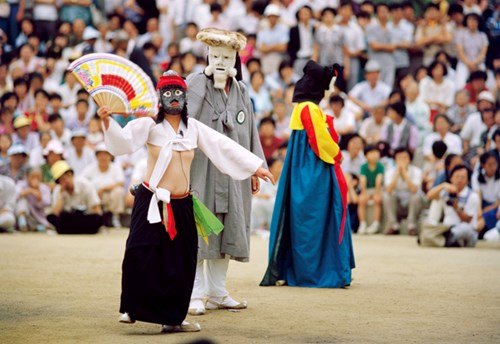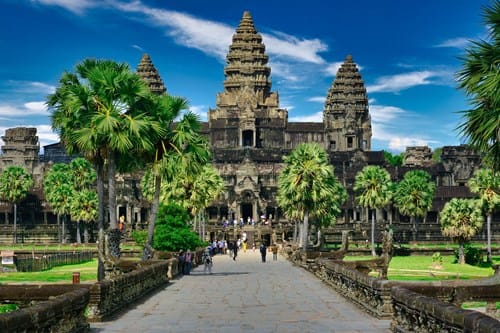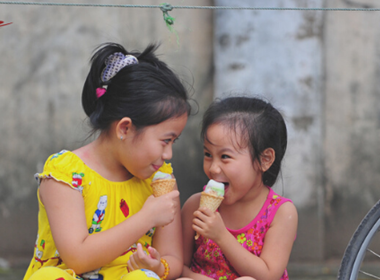South Korea offers a vast array of experiences that are both dynamic and reverent to its rich ancient heritage. With 5,000 years of fascinating history and culture, we offer you the opportunity to encounter Talchum, a traditional mask dance-drama that captures the essence of its Shamanic beliefs in various regions throughout centuries.
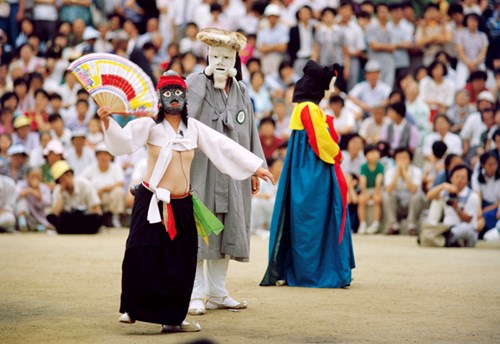
Talchum is a traditional Korean mask dance drama. Literally translated to “mask dance,” it displays the people’s close connection with village communities, which had long been the basis of Korean culture and tradition.
Cultural Significance
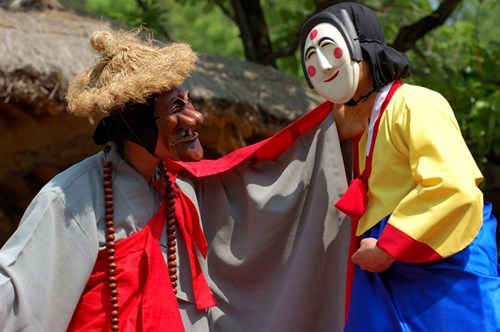
Talchum was derived from Shamanic rituals to pray for abundant harvest, peace, prosperity, and protection against evil spirits. As civilization developed, masks gradually evolved from sacred objects used in shamanism to becoming forms of entertainment and expression.
In the Joseon period (1392-1910), the dance rose to popularity among villagers as a means of self-expression and liberation. Talchum signified the spirit of the oppressed through dance. These masked performances told stories that criticized an unjust society or ruling class, and expressed the people’s desire for a reformed world.
The main themes of Talchum include, first, a ritual to drive away evil spirits; second, ridicule of apostate Buddhist monks; third, insult the hypocrisy of noblemen; fourth, tragedy arising from conflict among spouses and the joys or sorrows of everyday life.
The Features of Talchum
There are about 12 different types of mask dances throughout South Korea. Each region has distinctive masks and choreography, which showcase the movements, language, humor, and everyday life of its people.
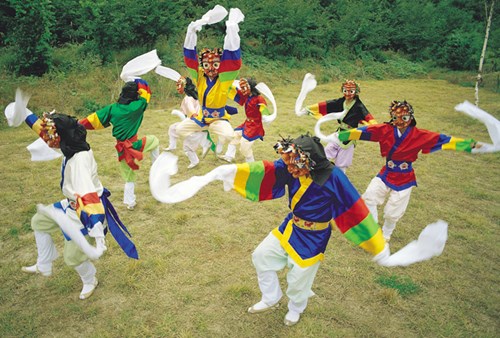
Masked artists usually depict a variety of characters including, people, animals, or spirits. Notably, the masks have distorted, exaggerated, and comical features that symbolize the social status or personality trait of the characters.
Musical instruments used in this dance style include a haegeum (fiddle), daegeum (flute), and janggu (hourglass drum). Bright traditional costumes and simple props such as a fan, cane, or prayer beads also help enhance the meaning of the story-driven dance.
The Legacy of Talchum
Today, enthusiastic audience participation has become the most exciting feature of Talchum. These traditional masked dances take place in the open air, where the dancers encourage the crowd’s reaction or allow them to join in the dancing, giving the participants a sense of unity.
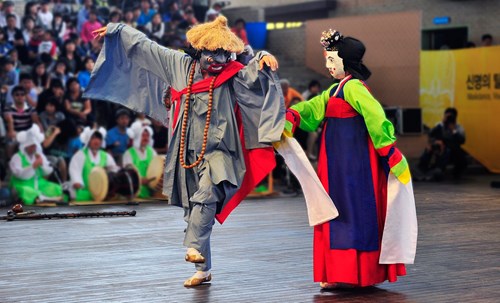
On any trip to South Korea, attending a Talchum dance performance must be at the top of the list. Visitors will be deeply immersed in the emotions, expressions, and historical moments of the country.
